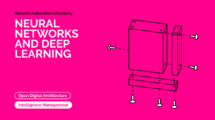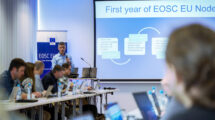If you are like me, the first question you ask yourself when reading this title is, of course, why 2028? It is out of sync with both our strategy and foresight work. But still, 2028 is an important date for us: the current Multi Annual Financial Framework (MFF) of the EU will come to an end in 2027, and with it our current funding envelope. At this moment, GÉANT’s main funding source is formalised by the GN5 Framework Partnership Agreement (FPA), a seven-year agreement signed in 2022, which allows for the definition of specific grant agreements, such as the current GN5-1 and GN5-IC1 projects. Funding for new programmes will commence from 2030 onwards, but as we all know the leadup to access to new funding programmes takes a good two years, at least. Hence 2028 is a key year for GÉANT.
Predicting the future and focusing on what may happen five years ahead is of course a challenge. But we can, to a certain extent, make predictions based on what we are seeing in the current MFF and the mechanisms defined in its associated Financial Regulation, as well as the main policy goals defined by the current Commission: the twin transition of green and digital, the corresponding Digital Decade programme, and the Global Gateway programme. They affect us already today and it is predictable that they will affect us even more in the future.
Where are we now?
Over the last two years, at GÉANT internally and in conversations with the EU NRENs and even our wider community, we have been talking about our “Big 5”. We have mapped the Big 5 African mammals to our main interests as a community: with the GÉANT project itself being the Rhino, EOSC being the Elephant (what else?), EuroHPC the Lion, Quantum with as many spots as a Leopard, and the Buffalo taken by our international activities. This easy metaphor has helped us focus our activities and it has resulted in organised community conversations, activities, and actions around EOSC and EuroHPC and has led to an increased dialogue on Quantum. Dependable as a Rhino, the GN4-3 project has wrapped up yet another outstanding project period and GN5-1 has started at full force. The international activities are shaping up in the form of the new GN5-IC1 project with the extended Network Infrastructure Advisory Committee Terms of Reference to ensure full community buy-in.
While you can imagine the Big 5 as vertical activities, we have also identified the horizontal activities which cut across all of the Big 5: these are to begin with of course the ‘secure connectivity’, Trust and Identity, Security, as well as Standards and Compliance and Legal aspects, including the digital/green transitions and their societal impact measured through our contribution to the Sustainable Development Goals (SDGs) in GN5-1.
When looking at this picture of horizontal and vertical activities, I would say that as a community we are well prepared. We have champions across these lines and are in constant conversation. This is good. But – and of course there must be a ‘but’, otherwise this would all be pointless: there is a Mosquito in this room, buzzing around and maybe even keeping some of us awake at night.
The Mosquito in the room
GÉANT and the NREN community have a track-record of more than 25 years of funding through the Framework Programmes for Research and Technological Development. These Framework Programmes, or abbreviated FPs, are funding programmes created by the European Union/European Commission to support and foster research in the European Research Area (ERA). Starting in 2014, the FPs were named Horizon2020 and Horizon Europe (HE) respectively. We have little experience in dealing with other funding instruments and, in the past, this has never been an issue.
However, what we see now and particularly in the advent of the Digital Decade is the growing fact that areas of our natural interest are funded outside of HE. Take EuroHPC: it is mainly funded through the Connecting Europe Facility (CEF). Or take Quantum, which is mainly funded in the Digital Europe Programme (DEP). While in the area of Trust and Identity the development of services is still being funded through HE, in the future the delivery of such services will be funded in DEP. International activities are funded in various environments from the Neighbourhood, Development, International Cooperation Instrument (NDICI) or the Instrument for pre-accession Assistance (IPA3), to elements of CEF. But all of it is coming together in the context of Global Europe, Team Europe, and into the Global Gateway policy.
So, across the Big 5, we already see a fragmentation of funding for those activities, which we have identified as priorities for GÉANT and the community.
In addition, we have the horizontal complexity of eligibility and compliance rules, which have of course always existed, but which have become more sharply defined in the wake of the war in Ukraine. The so-called security clause can be invoked in all funding instruments, with immediate and limiting effects: we suddenly may have to deal with the challenge of EU27 vs GÉANT44. For a community like ours which has been built and expanded over the last thirty years based on the premise and promise of trust, inclusion, and consensus, these criteria as a consequence of the geopolitical crises around us are challenging our core values.
And here is where the Global Gateway programme is suddenly so very interesting in its complexity and nuance: while it seems that the doors are closing and the funding is fragmenting, this programme aims to bring it all back together, casting a wide net for Europe to collaborate with our partners globally.
At GÉANT, with our stable global community of more than 115 NRENs world-wide, we are ideally placed to respond as an integral and reliable partner to the Global Gateway focus area of research and education, as well as digital. We can be the ‘not-forprofit’ global player at the table. The BELLA programme, as a pathfinder to the Global Gateway, has shown that we can make a difference.
What’s next towards 2028?

Whatever we do next, this must be a community discussion. I am happy to say that this conversation started at the General Assembly in March 2023 and will continue throughout this year and maybe into the next. It will be influenced by the EC’s plans for GÉANT, as well as their decisions on developments for EOSC and EuroHPC. There are three areas which we will have to keep our eyes on and deal with: positioning GÉANT, certification, as well as being able to receive funding beyond the current and known way of an FPA.
First, to avoid more fragmentation in the next MFF, we need to be able to state clearly the GÉANT position: that GÉANT and the NRENs provide secure connectivity and hyperconnectivity, as well as access and trust and identity services to the European research and education community. There is no need to fund connectivity or trust and identity services for R&E in every other programme or project. It is taken care of, we do it. And we innovate constantly. This must include the natural next step for networking, which may be Quantum, as well as the need for Europe to be internationally connected around the globe. This leads to the second element: we need to ensure that the GÉANT Association takes steps towards organisational maturity by undergoing a pillar assessment and qualifying for ISO certification.
And third: we need to be ready as the GÉANT Association, as well as the NRENs and our community, to be able to accept funding in different ways than just grants. This could mean the negotiation of a contribution agreement and a common understanding of what that means for the GÉANT and NREN dynamics. Equally, we may need to transform and in the future be able to compete with our services in public procurements by the EC or its operational entities.
The conversation has started. Let us together ensure that GÉANT and the community of NRENs keeps serving research and education in Europe for the next decade.
This article is featured on CONNECT43! Read or download the full magazine here







